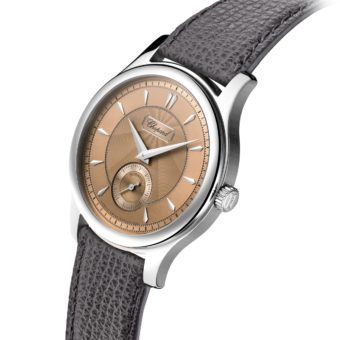The world media association FIPP has published a company profile and interview with WatchTime’s publisher, Dominik Grau, about the brand’s stunning success on mobile and digital in general. The FIPP presents WatchTime as a rare best practice example for a 16-year old magazine published by a 200-year old media company that has mastered the difficult transition from print to digital. The full interview can be read here. Here’s an excerpt with the most important key facts about WatchTime’s outstanding digital growth rate.
How this 200-year-old publisher nails mobile (and more)

FIPP’s Cobus Heyl exchanged emails with Dominik Grau of Ebner Publishing about the company’s stunning performance with WatchTime, a luxury watches magazine media brand.
Dominik, tell us Ebner Publishing in general and WatchTime in particular?
The wider Ebner Publishing Group of Germany founded WatchTime in 1999 in New York City. Ebner is a diversified media conglomerate and is the world’s leading publisher of luxury watch magazines. The company is 200 years old, it is owned by the Ebner family of Ulm. Ebner publishes 80 magazines and 30 websites in such categories as computers, music, film, video editing, fashion, firefighters, first responders, luxury watches, print production, and design, with a total audience base across all channels exceeding 10 million.
WatchTime reaches a monthly audience of 700,000 watch collectors. It is the most successful watch magazine in North America and one of the leading watch media brands globally. WatchTime is the world’s only watch magazine with two FOLIO Fame Awards for excellence in media events, seven Digital Magazine Award nominations, a SmartCEO Future 50 Award as well as two Mequoda Rocket Award nominations for outstanding digital audience growth, an Apex Award for excellence in electronic media, a Silver Eddie Award and a Gold Eddie Award.
WatchTime has mastered the transformation from a small print publication to a large multi-channel media brand. At a time when many magazines, including watch magazines, are declining, WatchTime has dramatically increased its audience thanks to initiatives we’ve made in digital publishing.
WatchTime has had an amazing year. Tell us about the highlights?
- 900 per cent newsletter database increase
- 800 per cent digital subscriber increase
- 700 per cent website visitors increase
- 300 per cent increase in digital revenues
- 50 per cent increase in total advertising revenues
- 20 per cent increase in print circulation and revenues
Then there is mobile.
More than 500,000 watch collectors visit watchtime.com on their cell phones, every month. And 90 per cent of our 100,000 newsletter subscribers read our news mailings on their cell phones, too. This is the result of what we call our “mobile first strategy”. Ever since we launched our mobile website in 2012 the traffic has increased: by 100 per cent in the first year and by 300 per cent in the second year. And now, three years later, our mobile traffic is up more than 1,000 per cent versus 2012, according to the latest Google research data.
And in January we launched the world’s first 24-hour social media newsdesk for luxury watches, with staff in America and Asia. This newsdesk posts the most important, exciting and newsworthy watches, technologies and industry updates, every day, around the world.
Mobile has performed superbly for you. What lessons can you share when it comes to this platform?
There are five:
1. Use smart technologies based on standard software and don’t try to ‘outbuild”’successful content management systems that thousands of customers use globally, you will end up wasting money, staff and creativity
2. Think scale and build for 80 per cent of your audience, it’s not worth investing your resources in satisfying the additional 20 per cent;
3. Create a strong content network, do not publish and forget, because the life of mobile content really only starts when it has been published: then it’s about sharing, repackaging, and republishing as often as possible;
4. Build for Apple, then for Android, then for the rest; forget Windows;
5. Apply a rigorous mobile first approach in every meeting and decision, forego desktop and tablet websites because the growth is on cell phones; do not primarily invest in building for stagnant or shrinking platforms!
See more at: http://www.fipp.com/news/features/How-this-200-year-old-publisher-nails-mobile






